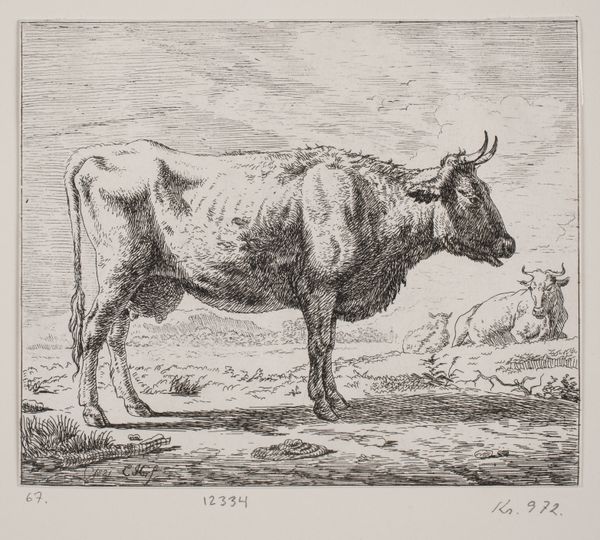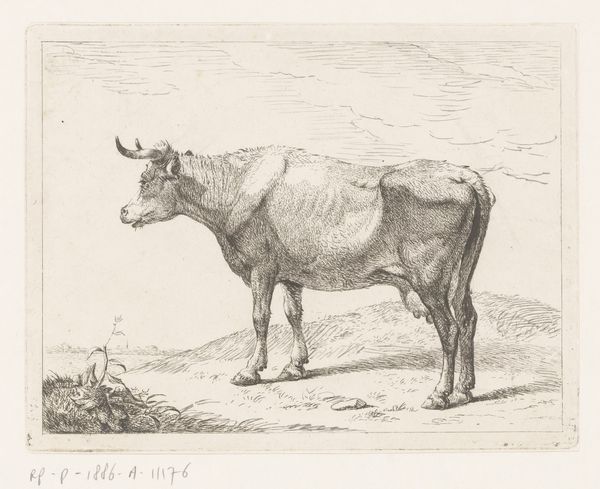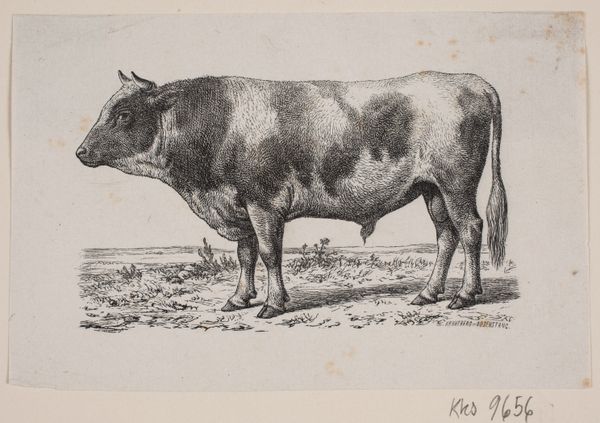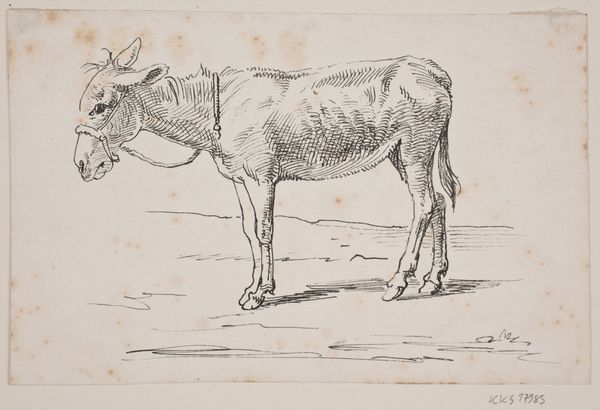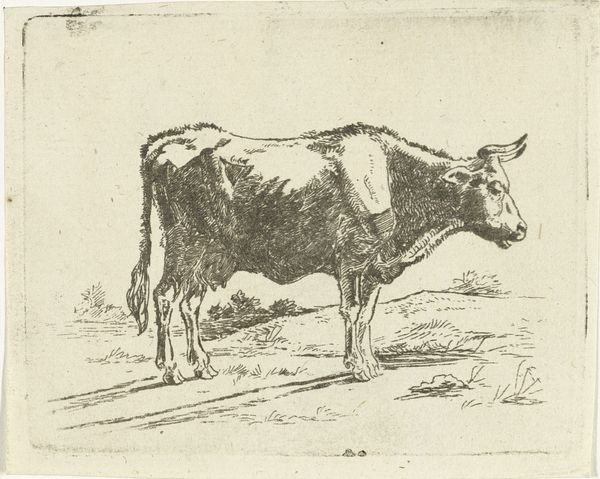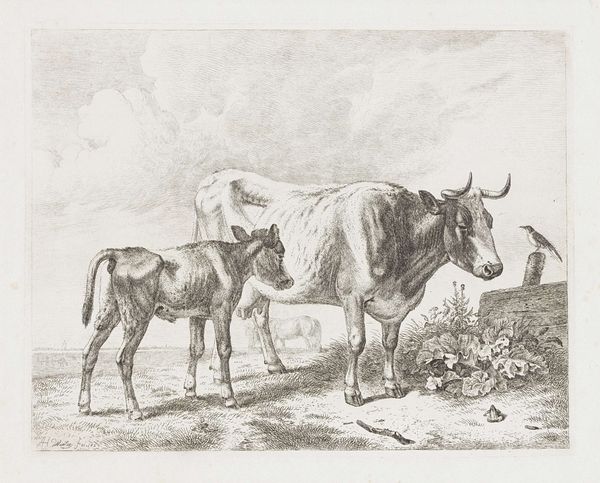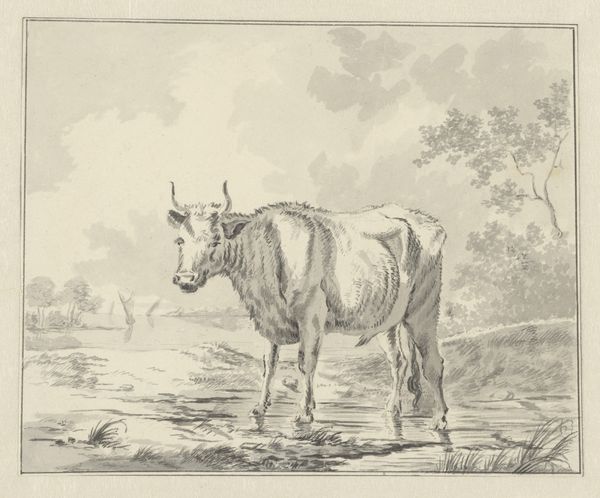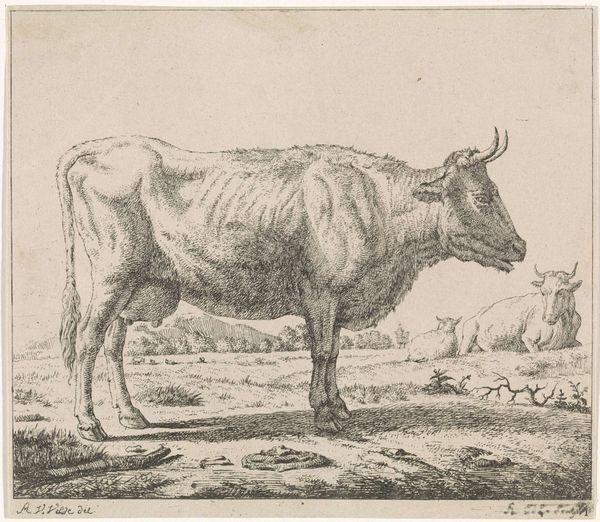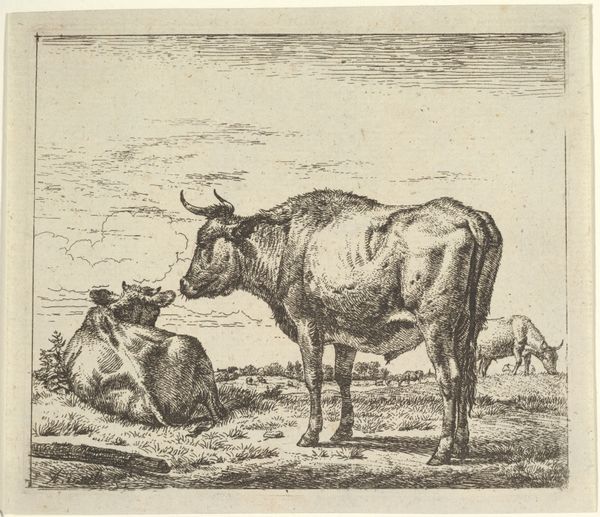
print, engraving
#
animal
# print
#
landscape
#
genre-painting
#
engraving
#
realism
Dimensions: 110 mm (height) x 133 mm (width) (bladmaal)
Editor: This is Christian Holm's "Standing Cow by a Watering Hole" from 1821, made with engraving. I'm struck by its simplicity; it's just a cow, but there's a quiet dignity to it. What do you see in this piece? Curator: That simplicity, I believe, speaks volumes. Cows in art, especially in the 19th century, often represent a connection to the land, a grounding in rural life. Consider this cow's placement; she is knee-deep in the water. Is that mere thirst or something deeper? Water is often used as a symbol for cleansing, regeneration. Editor: So, she is not simply standing, she could also embody the notion of rebirth. Is that an animalistic cultural trope that endures across generations? Curator: Precisely! Think of ancient myths – Europa and the bull. Even now, agrarian societies carry a sense of stewardship towards the land and cattle. The cow is sustenance, a symbol of fertility, of bounty. The animals in the background seem content as well. Editor: It’s fascinating how an everyday scene can carry such a weight of symbolic meaning, both as cultural reference and perhaps psychological insight, right? The artist decided to draw our attention to such a common creature. Curator: Indeed. And consider the medium, engraving. It allows for precise detail, realism but also creates a starkness. There’s an almost melancholic air about this image. Editor: I never thought I could look at a cow in a watering hole and see so much. Thank you! Curator: My pleasure. Sometimes the most profound meanings are hidden in plain sight, like symbols, aren’t they?
Comments
No comments
Be the first to comment and join the conversation on the ultimate creative platform.

